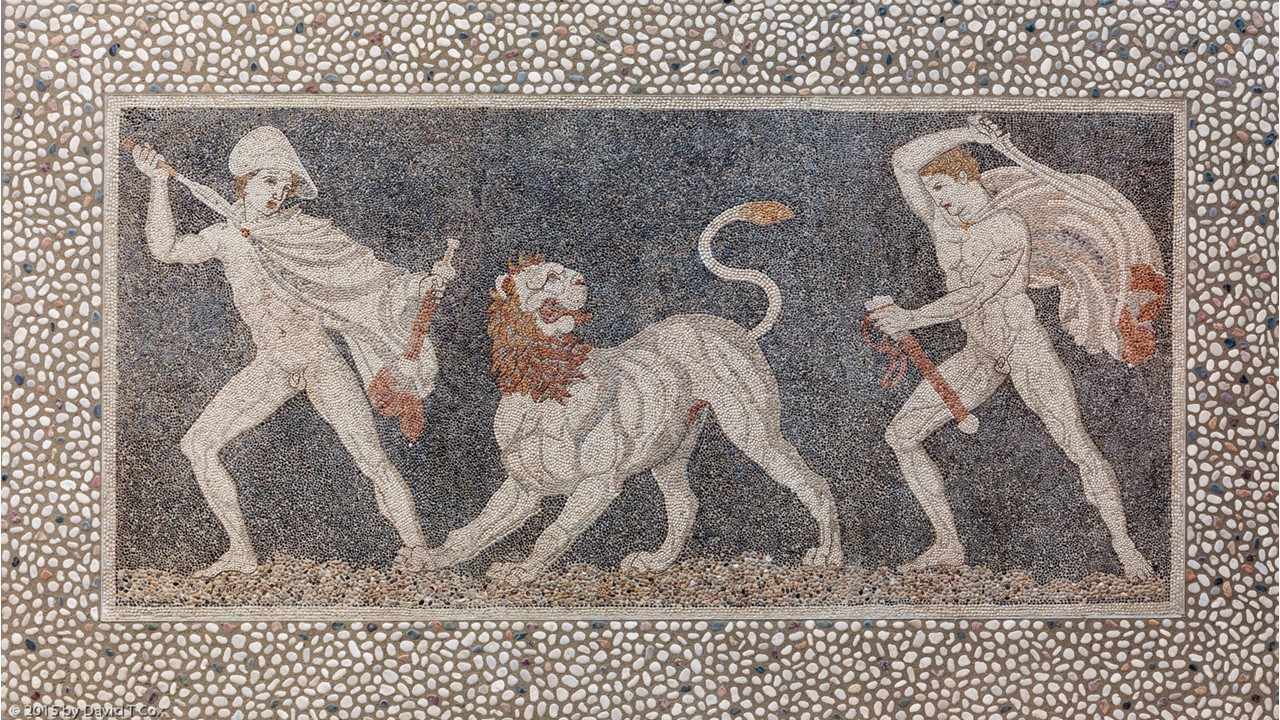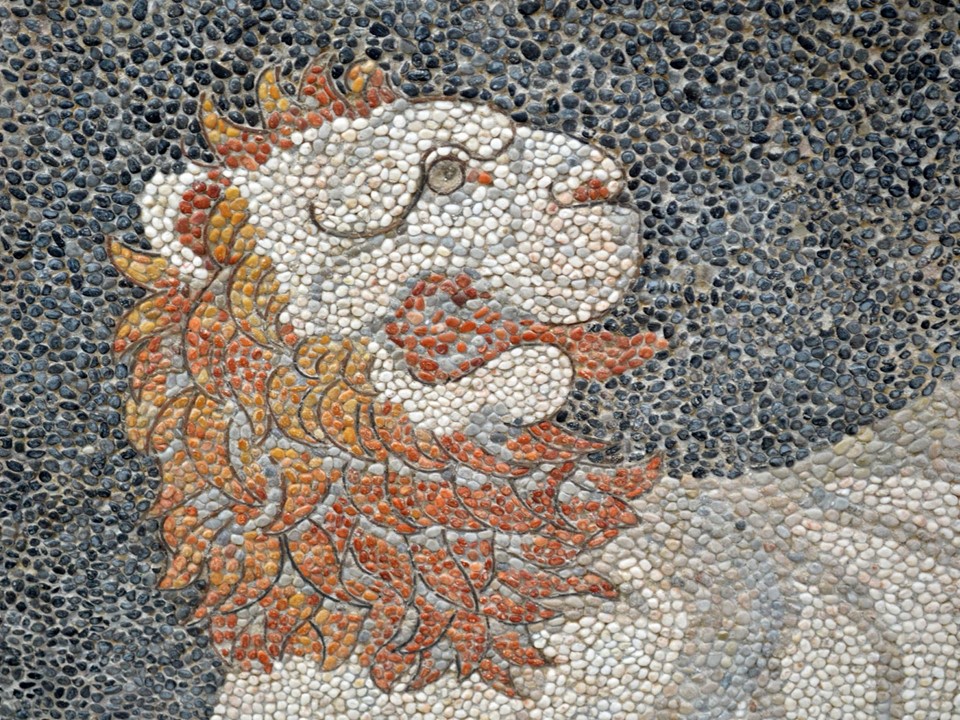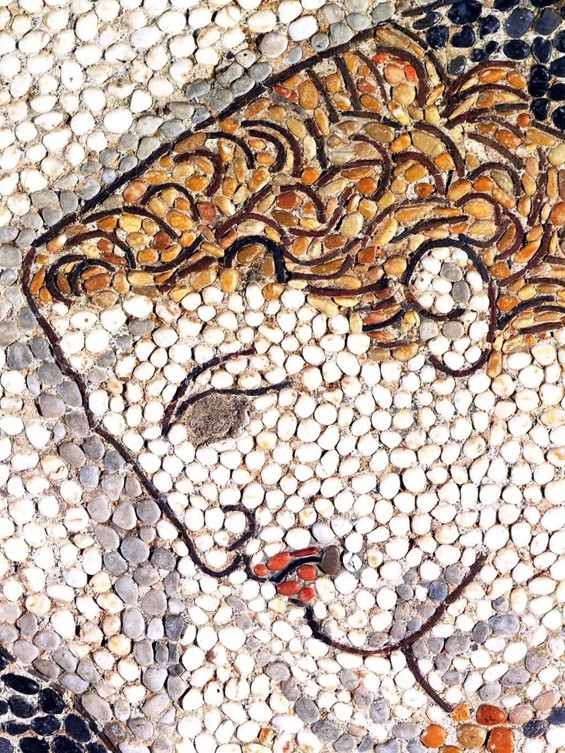
Is the Lion Hunt Mosaic at Pella inspired by Plutarch’s description that follows? “Accordingly, he exerted himself yet more strenuously in military and hunting expeditions, suffering distress and risking his life, so that a Spartan ambassador who came up with him as he was bringing down a great lion, said: “Nobly, indeed, Alexander, hast thou struggled with the lion to see which should be king.” (Plutarch, Life of Alexander 40.5) This hunting-scene Craterus dedicated at Delphi, with bronze figures of the lion, the dogs, the king engaged with the lion, and himself coming to his assistance; some of the figures were moulded by Lysippus, and some by Leochares.” https://penelope.uchicago.edu/Thayer/E/Roman/Texts/Plutarch/Lives/Alexander*/5.html Could the Mosaic at Pella present Alexander the Great and Krateros? Is the Pella Mosaic a faithful copy of the Delphi ex-voto sculptural monument? This is not an easy question to answer…
Chrisoula Saatsoglou-Paliadeli, back in 1989, wrote an article Το ανάθημα του Κρατερού στους Δελφούς (The Votive Offering of Krateros at Delphi), I always enjoy reading, particularly when I visit Pella or Delphi with my students. This article is a detailed and well-documented reference to the Lion Hunt event Plutarch describes. It takes me on a trip to Delphi – where Krateros dedicated an impressive monument commemorating the famous Lion Hunt event Prutarch mentions, the Louvre – the residence of an interesting Lion Hunt relief sculpture from ancient Messene and the Archaeological Museum of Pella – home of the celebrated Lion Hunt mosaic. https://www.academia.edu/7923619/%CE%A4%CE%BF_%CE%B1%CE%BD%CE%AC%CE%B8%CE%B7%CE%BC%CE%B1_%CF%84%CE%BF%CF%85_%CE%9A%CF%81%CE%B1%CF%84%CE%B5%CF%81%CE%BF%CF%8D_%CF%83%CF%84%CE%BF%CF%85%CF%82_%CE%94%CE%B5%CE%BB%CF%86%CE%BF%CF%8D%CF%82_%CE%9C%CE%B5%CE%B8%CE%BF%CE%B4%CE%BF%CE%BB%CE%BF%CE%B3%CE%B9%CE%BA%CE%AC_%CF%80%CF%81%CE%BF%CE%B2%CE%BB%CE%AE%CE%BC%CE%B1%CF%84%CE%B1_%CE%B1%CE%BD%CE%B1%CF%80%CE%B1%CF%81%CE%AC%CF%83%CF%84%CE%B1%CF%83%CE%B7%CF%82_%CE%95%CE%B3%CE%BD%CE%B1%CF%84%CE%AF%CE%B1_1_1989_79_100
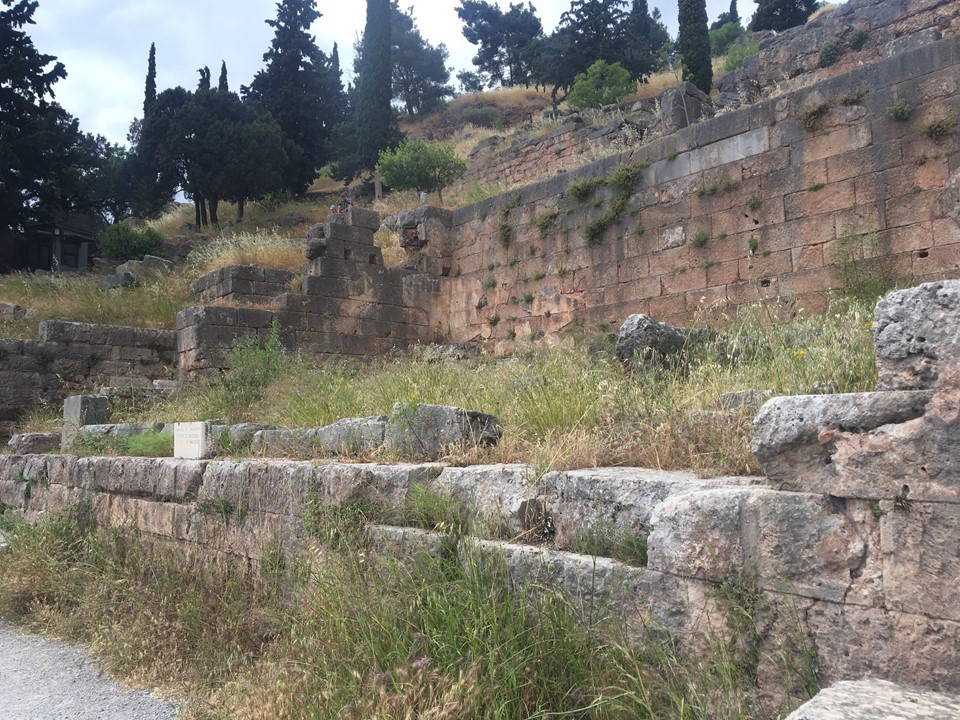
The impressive bronze monument, commissioned by Krateros and immortalized by Lysippos and Leochares, at Delphi, has unfortunately long perished. We can only guess that the protagonists of the composition were placed on a pedestal against the back wall of the building arrayed one next to the other. What survives, in the area between the Theater and the Temple of Apollo, is an impressive structure, rectangular in shape, measuring some 15.27 x 6.35 meters and standing up to 4 meters high. The building was probably a portico with a colonnade on its façade and a dedicatory inscription on its rear, according to which the building was identified as the ex-voto of Krateros, the Macedonian general and close friend of Alexander the Great and his son by the same name, after his father’s death, probably around 320 BC, or at the end of the 4th century BC.
The dedicatory inscription reads… “Alexandros’s son, Krateros, promised this to Apollo, an honored and glorious man; his son, whom he begot in his palace and left as a child, composed it, Krateros, thereby fulfilling every promise to his father, hoping that the hunt for this bull-killing lion may have eternal and attractive fame for him. For when he followed Alexander and destroyed everything together with him, with that much-praised king of Asia, he defeated him and killed him when he fell into his hands in the land of the sheep-bearing Syrians.” https://pausanias-footsteps.nl/regios/phokis/delphi-votiefgaven/?lang=en Can we reconstruct this amazing sculptural composition? Plutarch’s description and the Delphi inscription present us with the necessary but inconclusive hints!
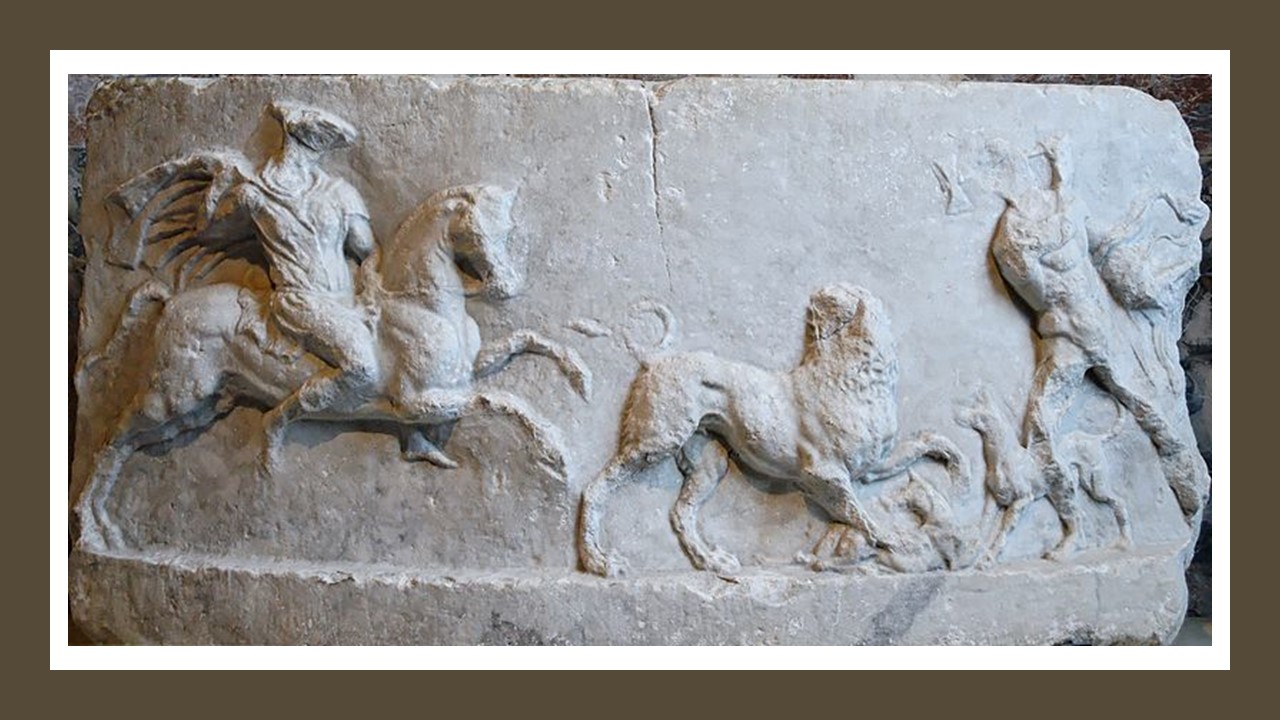
Petros Themelis writes about the Messene Lion Hunting scene in the Louvre, in his article A Macedonian Horseman – the Relief Louvre, inv. no. ΜΑ 858 from Messene, presenting the latest archaeological discoveries and attributes it to the funerary monument of the Philliades family. “The stone block Louvre MA858 (height: 0,60 m, width: 1,205 m, depth: 0,28 m) carries a relief representing (on the right) a naked male figure with a lion-skin wrapped around his left arm, striking down a lion with a double axe, while a horseman wearing a Macedonian causia, chlamys, and belted chiton with short sleeves comes rushing up from the left side. The hunter with the lion-skin and the axe is usually identified with Alexander, while the horseman with the causia is identified with Craterus because the relief is taken to reflect Craterus’ Monument at Delphi.” https://www.academia.edu/39501780/P_Themelis_2019_A_Macedonian_Horseman_the_Relief_Louvre_inv_no_MA_858_from_Messene_%CF%83%CF%84%CE%BF_EXCELLENCE_STUDIES_IN_HONOUR_OF_OLGA_PALAGIA
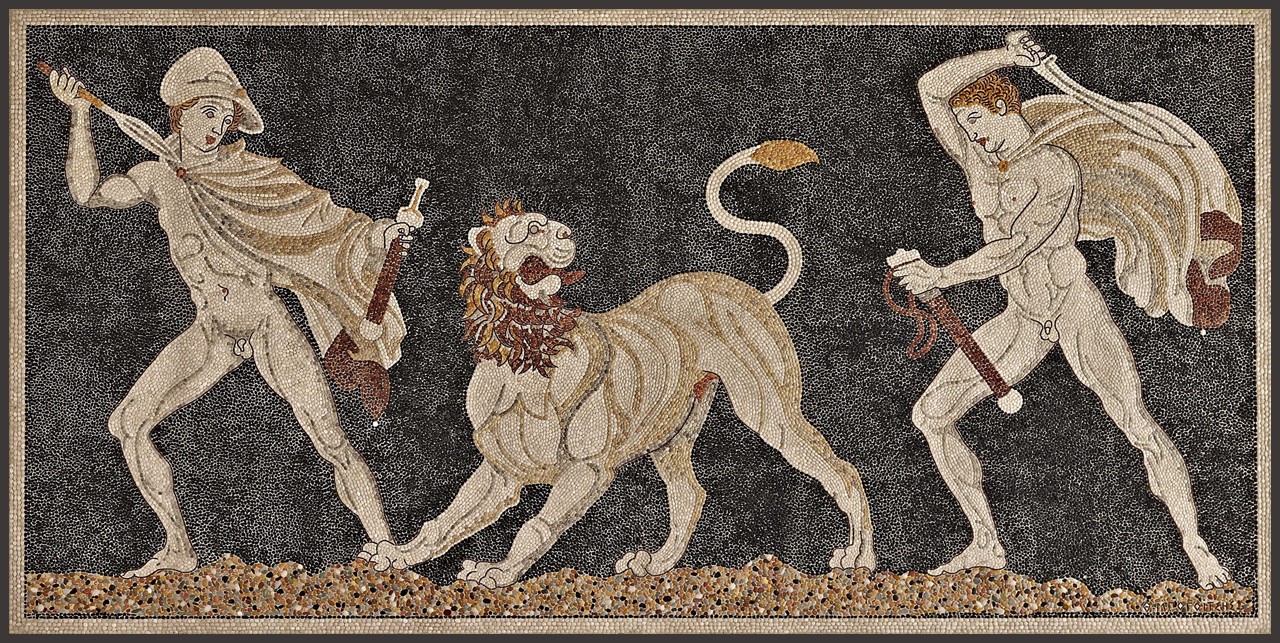
The Lion Hunt Mosaic at the Archaeological Museum of Pella, detached from the so-called house of Dionysus, is a masterpiece of mosaic making. “The bodies of the figures on the mosaic floors at Pella are highlighted against the dark background by white pebbles, and the sculpted volumes are accentuated by the chiaroscuro created by grey pebbles in various tonic gradations. Red pebbles… were used in a limited way… The ground in the mosaic of the lion hunt is characterised by its many colours, while the outline and details of the figures’ body parts are rendered by thin strips of lead or terracotta.” Please note the intensity of the figures’ movements, the lion’s position in the middle of the composition, moving forward/looking backwards, his right front pow stepping over the foot of the receding man to the right, wearing a Petasos… https://www.latsis-foundation.org/content/elib/book_18/pella_en.pdf and http://www.pella-museum.gr/explore/museum/enotita1/kathimerini-zoi
My students and the Lion Hunt Mosaic, Archaeological Museum at Pella. For a PowerPoint, please… Check, HERE!
